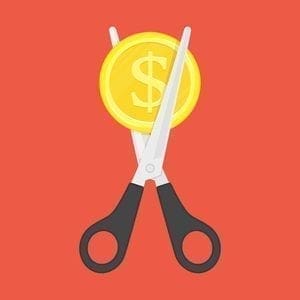The cost of healthcare may be a sizable portion of person’s or families’ annual expenses. Therefore, it is important for people to know how they can become better healthcare consumers and help cut down on their personal costs. Learn tips for reducing medical costs below.
Tips for Reducing Medical Costs
What is a healthcare consumer? In recent years, the term has been associated with people who are actively engaged in their personal healthcare. One reason the term has become well known is due to healthcare benefits accounts that people get through their employers. These include Flexible Spending Accounts (FSAs), Health Reimbursement Arrangements (HRAs), and Health Savings Accounts (HSAs). Each account is a tax-advantaged benefit, meaning there are tax savings involved, and helps people cover those out-of-pocket medical costs. As people learn more about their personal healthcare and how much items and services costs, they are more conscious with how their money is spent. Basically, healthcare consumers have changed from being passive patients to taking a more active role in their day-to-day healthcare decisions.
When you have a FSA, HRA, or HSA, it’s crucial that you carefully manage those funds in order to maximize those benefits. If you use up all your tax-advantaged dollars too early, then you’ll have to pay completely out of pocket for other expenses without the tax relief. Another mistake some people make is hanging on too long to your funds and losing them (see FSA Management below).
With that in mind, here are some tips for reducing medical costs.
Max Your HSA Contributions
If you’re enrolled in a qualified high deductible health plan (HDHP), you’re eligible for an HSA. Once you enroll in an HSA, you can enjoy triple tax savings:
- Contributions are tax-free
- Withdrawals for eligible medical expenses are tax-free
- Interest and investment income is tax-free
If you can afford it, maximize your contributions each year. The more you contribute, the more you save in taxes. You can also change your annual contribution at any time, for any reason. You don’t have to wait for the beginning of the plan year to make adjustments.
Another tip is to find out if your employer offers wellness incentives that result in HSA seeding. If so, try to meet those objectives to help boost your HSA balance.
Best of all, you own the HSA. That means you can use it even if you aren’t enrolled in an HDHP or your employment status changes (such as switching employers or losing your job). Since unspent funds roll over each year, you can build up the account and save it for later use – even for some Medicare premiums.
Limited Purpose FSA (Friend of the HSA)
Speaking of HSAs … If you’re enrolled in an HSA, your employer may also offer a Limited Purpose FSA (LPFSA). An LPFSA can be used for vision and dental expenses only.
One tip with having both an LPFSA and HSA is to use your LPFSA for those vision and dental costs first. This allows you to save your HSA (and all of its advantages) for other necessary healthcare expenses.
FSA Management
The key to FSA management is two-fold. First, FSAs are not portable, like an HSA. If you leave your employer for any reason – change jobs, retirement, etc. – you cannot take your FSA with you. Second, the end of year spending options are:
- Use it or lose it – You lose all unspent dollars
- Carryover – You can keep up to $660 of unspent funds for the following year (depending on plan)
- Grace period – You have up to 2.5 months to spend any remaining balance
Therefore, you have to plan carefully because no matter which option your plan has, you may have to forfeit some unspent dollars.
Know Your HRA Plan!
HRAs are another awesome benefit account. The best part of an HRA is that is funded 100% by the employer and it does not count toward your taxable income. That’s basically free money for you!
There are now 4 HRA account types:
- ‘Standard’ HRA
- Individual Coverage HRA (ICHRA) – different than a group health plan
- Excepted Benefit HRA (EBHRA) – funds for vision, dental, short-term or limited duration insurance premiums
- Qualified Small Employer HRA (QSEHRA) – reimbursement of medical expenses for companies with less than 50 full-time workers
However, to maximize your HRA benefit, you have to know which expenses are covered. Some accounts will cover health insurance premiums (ICHRA and QSEHRA), while others do not. It’s up to the employer to choose what they will cover (most commonly prescriptions, copays, etc) and how much to put into the benefit account.
You can find all of this information in the Summary Plan Description (SPD). Otherwise, you may not get reimbursed for something you thought was a plan-eligible expense.
Additional tips for reducing medical costs
Prescription Medication
Prescription medication can be costly, especially for name brand drugs. One way to save is to use generic drugs, which are significantly cheaper than and usually just as effective as their brand name counterparts. Ask your doctor if there is a more affordable option than the one prescribed.
Another prescription tip for reducing medical costs is to use mail order pharmacies whenever possible. You can order in bulk which can save you some money over using a traditional pharmacy. If you have a benefits debit card for your FSA or HSA, you can use it to pay for prescription medications ordered online through a pharmacy.
Use In-Network Providers
Whether you have an HSA or FSA, you can cover the cost of copays and deductibles from these accounts (some HRAs pay for this too). If you stay in your healthcare plan’s network, rather than using an out-of-network physician, this will save you a tremendous amount of money and help you stretch those benefit dollars further.
Wellness Clinics and Annual Checkups
Many health insurance plans offer free wellness visits or annual checkups. If it’s included in your plan, take advantage. These can be the easiest and most affordable way of diagnosing ailments in their early stages. When caught early, serious illnesses are more easily treated and cost less than in later stages.
Read Your Bills
Eight out of ten people do not read their medical bills, according to the Medical Billing Advocates of America. You should always read your bills and your Explanation of Benefits (EOBs) to know how much you were charged for a procedure and to know how much your insurance covers.
These are just a handful of tips for reducing medical costs and helping you become a smarter healthcare consumer. With a tax-advantaged healthcare benefit account and effective planning, you can greatly reduce your expenses and maximize your savings.

